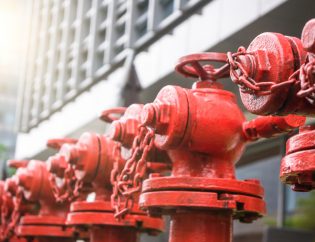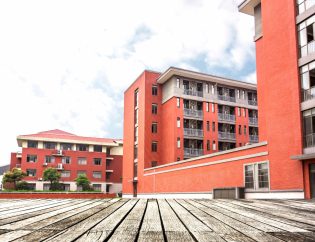
Buildings - residential or commercial - of all sizes face immense efficiency and security issues. There is a huge need in every industry to automate work processes, more importantly with regard to energy and safety issues and protocols.
Organizations have a desperate need for building automation and control solutions. Most problems occur due to manual work - issues we know the right technology can easily prevent and solve.
One team we connected with in mid 2021 - yes at the peak of the pandemic - was from a top retail brand with multiple warehouses across the country.
Their problem? It was straightforward. They wanted to get smart with their energy use and fire processes.
However, most solutions in the market were either beyond their budget or the systems were outdated - not really smart.
What was the way forward? Our suggestion: An IoT-based solution.
We built an IoT-based building management system that was well within their budget. After all, that’s what we do - create solutions that solve business problems using the latest technologies, both software and hardware.
About the Warehouse
The warehouse belongs to a major Indian garment retail brand. The company has several warehouses across the country.
One warehouse is no less than 1.6 lakh sq feet in area and 20 ft in height.
The person responsible for the safety and security of the warehouses was, with good reasons, worried about the state of affairs of the energy and safety measures in the company.
He’s the organization’s safety and security head. We don’t wish to reveal his name. Let’s call him Mr. Venkatesh or Venky.
Venky was looking for a solution that would help him manage the energy usage of the mammoth-sized warehouses, with the least amount of manual intervention. And also automate their safety processes.
Day-To-Day Energy And Safety Issues
Most of the challenges that Venky and his team faced on a daily basis were due to lack of automation, no data related to energy usage and safety and security of the warehouse.
Compliance with government regulations hung like the sword of Democles over the team’s head.
When we looked closely at the problem, we told Venky that all the critical tasks “need not” be done manually.”
Let’s take a closer look at the issues they faced and how our solution helped them achieve their energy and safety goals.
1.
Fire Alarm Panels
The main purpose of a fire alarm panel is to activate a timely emergency response whenever there is fire in the building. It helps people exit the building safely. Different fire alarm panels have different features of course.
The problem Venky and his team faced: What was the status of the fire alarm panel? Was it even working? Did it require servicing? There was no way Venky and his team could have answers to these questions without checking the panels manually from time to time.
Our Solution: Our system captures raw logs of the fire alarms, analyses it, and presents them in a dashboard. It sends alerts and messages to keep the team updated on its status.
2.
Fire Hydrants / Fire Pumps / Johnny Pumps
There are various types of water pumps. Fire hydrants or pumps are basically water pumps with specific features that are used in firefighting. And unlike in the domestic water pump, the fire pump has different requirements. They are basically outlets connected to the building’s water supply system and are an essential part of a building’s fire safety and security system. Fire pumps need a constant flow of water without interruption because of its function of supplying fire fighting water. They are used by firefighters during a fire to put out the flames.
The problem Venky and his team faced: Somebody had to manually check the water level of the pump on a regular basis.
Our Solution: Our system records water pump usage and whenever it goes on/off. It triggers an alert to the stakeholders if the level of water falls below the required level. It even records and provides usage, manual or auto, on/off data, and so on. Even the diesel containers near the pumps need to have diesel indicators so that when the level goes down below the required level, it would send an alert.
3.
Fire Sprinkler System
A fire sprinkler system is an important part of fire safety systems. In India, it is more commonly seen in business and industrial establishments. It consists of a water supply system with a network of water pipes and sprinkler heads. Water is stored with pressurized air and delivered differently in different sprinkler systems. As soon as the system detects heat, the sprinkler head goes off and releases water.
The problem Venky and his team faced: Without manual checking, it is not possible to know if it’s in working condition or if the water pressure is at the correct level.
Our Solution: Our system triggers an alert to the stakeholders if the system is not working or needs a service. It records and provides usage, on/off data, and so on.
4.
Jockey Pump
The jockey pump is an essential part of a fire pump and sprinkler system. Its main function is to maintain the required pressure in the water pipes. These pipes used in the sprinkler systems are designed to perform optimally only at a certain pressure range. It is basically a pressure-maintenance pump.
The problem Venky and his team faced: Without manual checking, it is not possible to know if it’s in working condition or if the pressure in the water pipes is at the correct level.
Our Solution: Our system triggers an alert to the stakeholders if the system is not working or needs a service. It captures and provides meaningful data such as usage, on/off data, and so on.
5.
Water Reserve for Firefighting
Even if all fire fighting systems and measures of a building are in place, they would be of no use if the water supply is insufficient. Every building must have sufficient water reserves for unseen and critical functions like firefighting. Water tanks that are reserved for firefighting must always contain an adequate amount of water. However, there is no way to know the water level in the tanks, except manually.
The problem Venky and his team faced: Manually keep checking water level in the tank reserved for fire fighting.
Our Solution: A system that sends alerts and notifications on the water levels in tanks reserved for fire fighting.
6.
Electricity Source, Electrical Points, & Lights
The problem Venky and his team faced: Inefficient use of energy and lack of control over energy use. They wanted to maximize the energy efficiency of the warehouse. But there was no way it could be done without capturing data in a useful way.
Our solution: Our system helped them record raw data and present it meaningfully. It includes recording the current status of their energy use, readings and analytics from energy meters, track electricity usage by source, raw power versus generator power consumed, and so on.
Lights were mapped using sensors. When someone is near the light only then those sets of lights would be switched on. Electricity use was automated based on policy - such as cafeteria lights should switch on and off under a given time or situation.
7.
Other Functionalities Integrated with the System
- HVAC: These are systems that include various equipment and components to maintain temperature, humidity, air quality, and so on in a building. Through integration with sensors, our building management system gathers important data that help maintain the HVAC system and assures that it’s always functioning at an optimal level.
- UPS Room: Our system records temperature, humidity, and air quality and sends alerts whenever something is outside the normal range.
- Doors: The doors are access control enabled with RFID so that all entries and exits are recorded by our system, including access control for the critical IT server room and IT storage.
Most of the challenges that Venky and his team were facing provides a glimpse into the widespread problems that building owners and managers - both residential and commercial - face on a daily basis.
However, most available solutions come with humongous price tags. It's a pretty big deterrent for most individuals and companies from even considering energy efficiency and safety automation for their buildings and structures.
What VersionX offers is a lean system that's smart as well as economical at the same time.









